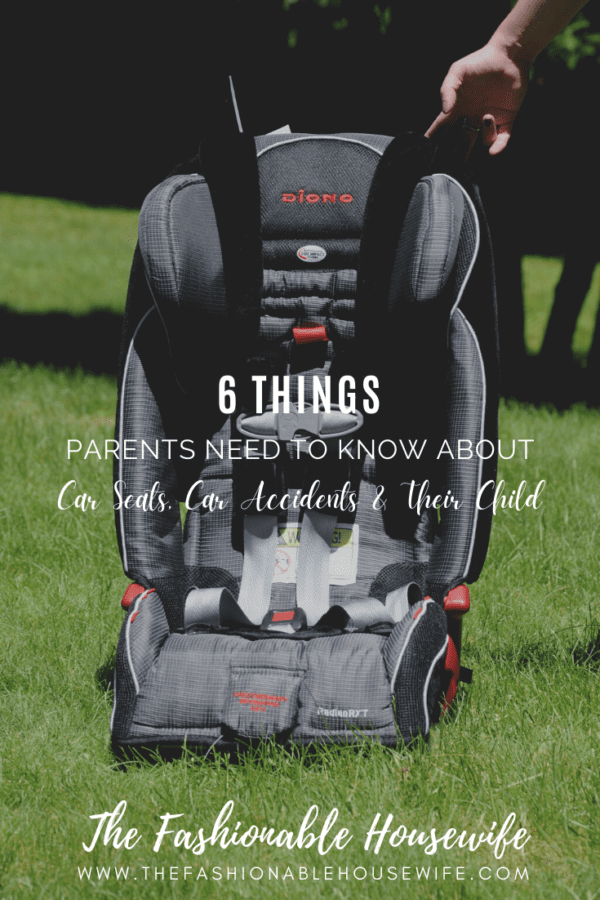
If you’re a parent, your first instinct may be to protect your children in any way possible, and that includes during the trips you take in your car with your bundles of joy. Now, each year, children are injured and killed on our roads globally, and most of these fatalities are actually preventable!
A huge part of these deaths is caused by the lack of car seats. This was actually mentioned in one of our previous articles about car seats that parents should know and adhere to. One way many parents try to protect their children is by putting them in car seats, which are designed to keep the child in place throughout the commute.
While these incredible accessories can be helpful in the event of an accident, there are still many things that people do not know about car seats and accidents. For instance, getting a car seat should be a top priority if you’re a parent.
Below are a few facts about car seats and why they are the best tools to protect your child while traveling with them.
1. Buckle Before You Start the Ride
A car seat acts like a child’s self-restraint system. It’s designed to protect a child from injury in case of a vehicle collision, rollover, or side impact, just to name a few types of car accidents. Buckling could in fact be considered the barrier between life and death.
The sad truth is that many parents forget or avoid fastening their children in place, especially when they throw tantrums and protest. Buckling should never be a debate.
However, it’s worthwhile noting that even if you secure your child, you can still be crushed by other reckless drivers on the road. If you happen to suffer from the negligence of such a driver and you or your kid is injured, don’t hesitate to hire an experienced car accident lawyer ASAP, perhaps after seeking medical assistance.
They will guide you and journey with you through the process of seeking compensation for the various damages suffered by you and your child, including pain from injuries, trauma, vehicular damages, and so forth. The key takeaway here is that buckling up, or rather, having your child positioned safely in a car seat maximizes your chances of getting compensated, despite the distance of your ride.
From this, you have one giant reason to make sure your child is buckled up every time you take a ride with them.
2. Your Choice of Car Seat Matters
Car seats come from different manufacturers. They vary in design, color, bulkiness, and so forth. There are a myriad of factors to consider while choosing a car seat for your baby or child. Your choice should be guided by, among other things:
- The child’s age
- The kid’s size
- Height
- Gender
- Special needs if any
- Pricing and durability
- Compatibility with other baby travel accessories, including strollers and boogies
- Ease of installation – Good ones come with text and diagrams to aid installation
- Should you get a car seat stroller combo?
- Protection level – consider features like the 5-point harness safety system with 2 shoulder straps, 2 waist straps, and 1 between the child’s legs.
- Ease of cleaning and maintenance
The main idea is to pick a good car seat that suits your child best. Also, consider getting a car seat that has been tested and approved by the UN Regulation 129 so you can avoid compromising on quality. Moreover, you could also invest in a convertible seat, which gives you more room to keep using it as the child grows.
3. Car Seats Should Be Installed Properly
A car seat is one of those key necessities which keep your child safe during a ride. However, installing a car seat can sometimes prove difficult, even after reading the manual. But who said you have to be a know-it-all?
If you are not familiar with how to go about it, don’t gamble with your child’s safety. Ask for assistance from a child passenger safety protection technician and avoid putting your child in danger. Failure to secure it well can make it lose and rock your child’s body dangerously during the drive, potentially causing grave injuries in case you encounter an accident – even a fender-bender.
Does The Seat Belt Type and Positioning Matter?
Sometimes the installation will also depend on the type of car seat you get. For instance, forward-facing car seats are best for kids between the age of four and seven, whereas rear-facing car seats are best for younger kids.
On the other hand, a booster seat is recommended for kids aged between eight and twelve, where the seat belts are placed fittingly over the child’s strongest parts of the body.
4. Avoid Bulky Clothes
Regardless of how chilly the day is, dressing your child in bulky and puffy clothes while on a car seat should be a No-No! The bulkiness tends to interfere with the safety of your child.
Moreover, most of these puffy coats and jackets are filled with polyester filling. The fiber tends to flatten when the car is hit with an impact during an accident. This ends up creating space between the harness and your child.
But this does not mean that you should leave your child to freeze, no! After dressing your child in thin layered clothes, you can lay a light blanket on top after buckling and securing your child.
5. Expiry
Almost everything has an expiry date on this earth, including life. This might sound a bit whacky, but car seats also do expire! The seats are made of plastic material, which gets fragile over time. This makes them ineffective as they age, which can compromise your child’s safety.
That’s why you need to run and check the expiry date as soon as you finish reading through this piece in case it needs a replacement. Different car seats have varying expiry dates. On average, most seats last a minimum of 6 years to 8 years.
This makes borrowed and second-hand car seats the last option for any parent. If you have to buy them, ensure the unit is free from any tear or wear, and that the expiry date is far from due.
6. Avoid Toys
Most parents have a tendency to pile toys next to their child’s car seat to keep the child distracted as they drive. If this sounds anything like you, stop it! Attaching toys to the straps of a car seat can affect its effectiveness in protecting your child.
For what it’s worth, some of these toys become hazardous projectiles in the event of a collision, which could end up injuring your child. If a toy did not come with the car seat, then it does not belong anywhere near the seat. Keep it away for your child’s safety!
Summing It Up
Some decades ago, children were buckled in the passenger’s seat while riding with their parents. Today, car safety has been enhanced greatly, thanks to the invention of car seats. Investing in a car seat should be at the top of the priority list for every parent who loves their kid/s and wants to travel with them often.
Using a car seat should be a rule for every parent. It protects your child from the unforeseen while on the road, including rough bumps and traffic collisions. They reduce deadly injuries and death tremendously during any car accident. Just make sure the car seat option you pick is the right size and fit for your child, it’s from a reputed brand/model, and has been tested and approved.
With the above few pointers in mind, any parent can feel safe whenever they take a ride with their young ones in the car.
Feeling easy that your kid is safe in the passenger seat also means you’ll be much more focused and attentive on the road, minimizing the chances of causing an accident from distracted driving.



